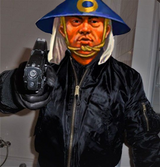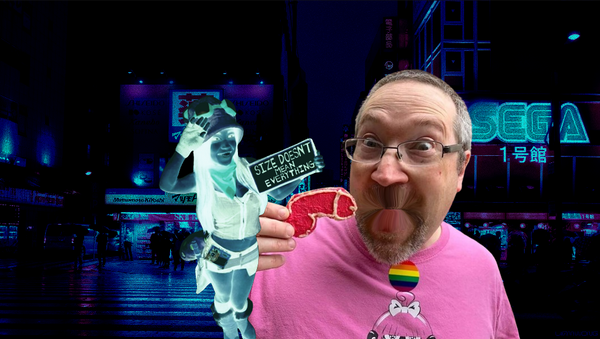Understanding Japan's High Context Culture

Japan is considered to be under the category of a high context culture, so a lot of the time, you don’t need to explain much because there’s an unspoken understanding between people.
It’s easier to say no in Japan than in most Western countries — however, it’s much more difficult to ask for an explanation or reason. If someone asks you out for a drink in Japan, an indirect “I have something else to do today” is taken as a decline to the invitation and no reasoning is asked for, whereas in Western countries, people feel compelled to have a justifiable reason for declining.
This is all linked to what sociologists call high context and low context culture. It all balls down to a unique Japanese custom called “kūki o yomu”, which translates to “reading the air”. What exactly is it, why is it so important, and how do we begin to practice reading the air? All these answers and more are just a scroll away!

High Context vs Low Context Culture
The terms “high context culture” and “low context culture” are used to define how people in various cultures communicate messages to each other. This concept was introduced by Edward T. Hall, an anthropologist back in 1976. Researchers today are using it greatly to study different cultures all over the world.
Northern America, Northern Europe, the United Kingdom, and Germany are just a few named ones that are known to be low context cultures. With low context cultures, communication is expected to be direct, precise, and explicit. People express their opinions and ideas more openly and they don’t rely on other contextual elements and body language as much. Speech in these cultures conveys the full message and emotional expression to the receiver.
On the other hand, Japan and China are namely high context cultures, with Japan holding one of the top spots. In these high context cultures, they’re usually defined as a collective society. The communication type is the opposite of low context culture — it’s expected to be less direct, vague and implicit. People rely on reading between the lines and assume what the message the speaker is trying to convey.

Kūki o Yomu: Reading the Air
This brings us to the Japanese custom we mentioned earlier: “kūki o yomu”. It can be likened to the English phrase “reading between the lines”. You ought to be situationally aware and attentive to not only your own thoughts and feelings but also of the people around you — all without the need of expressing them aloud. It’s one of the most significant and fundamental aspects of Japan’s communication culture.
This Japanese custom is not only about social relations — it applies to business context as well. You’re expected to predict the consequences of actions and words when you’re interacting with other people, as well as realizing your own social status.
This ability to read the air is not a genetic predisposition or something taught in Japanese schools or by parents — it’s a social trait. You pick it up spontaneously as you go along in life, socialize with others, communicate and most importantly, observe. It’s in the nature of Japanese people to observe their elders and people around them, then mimicking what they see.
It’s an important skill to have in Japanese society — it’s easier for you to make friends, get into a university and get a job. You’ll be more well-liked and fit into the local community easier.
Someone who’s not able to catch the real meaning of other people’s words is often called KY, an abbreviation of “kūki yomenai” to mean “one who can’t read the air”. If you’re unable to understand the environment you’re in, it can cost you — whether it’s ruining a relationship or blowing a huge business deal.
“Kūki o yomu” forces you to pay attention to signals people are putting out, more than usual, and to put yourself in the other person’s shoes.

Indirectness in Japanese Communication
Reading the air is also present in other cultures, like “reading the room” or “knowing your audience”, but Japanese people are far more sensitive to this custom.
There was a tweet that went viral in Japan back in 2019 about a businessman in Kyoto who met a potential client. The client complimented his watch, so the businessman started explaining the watch’s features. It took him a while to realise that the client didn’t care much about the watch, but more of the time it showed — he wanted the businessman to look at his watch to see the time and wrap up the conversation.
That one situation can sum up the indirectness factor in Japanese communication.
There’s no such thing as a direct answer in Japan, or at least in my experience. You don’t really get a straight-up “no” from anyone, whether it’s a casual or business setting — the politeness within the culture forbids them to. A “maybe” or “it’s possible” is used instead.
I’ll give you an example: I once asked someone if he could direct me to the nearest station, and his answer was “sore wa chotto…” This directly translates to “that’s a bit…” but it actually holds the meaning of “that’s inconvenient for me” or “that’s a bit difficult for me to answer.” Basically, he was indirectly telling me no. The sentence was left hanging, but that’s the phrase often used in Japan — people assume you’re able to determine the rest of the sentence and read the situation.
There’s a collectivist culture in Japan that is probably one of the reasons for this ambiguity. The society prefers conformity over individualism — to directly communicate is like going against this status quo. So they avoid unpleasant interactions and situations to maintain social harmony, and to do that, everyone has to acquire the skill of reading the air.

Tatemae vs Honne
Tatemae is what one expresses in public and honne is what one truly feels. It links together with how Japanese communication is epitomized by implicitness and indirectness. People are socially obligated to respond according to tatemae, defined by social expectations and opinion, regardless if it contradicts their own honne.
That’s because importance is placed on demonstrating respect and saving face. If you deny a request directly by saying “no”, Japanese people believe that that’ll cause embarrassment and both the invitee and inviter will lose face. A “maybe” or “I’ll consider it” is the Japanese way of saying “no” — their indication of their honne.

“Hear One, Know Ten”
Something that’s linked closely to “kūki o yomu” is a concept called “ichi ieba jū o shiru”. This translates to “hear one, know ten”. Subtlety is pretty key when it comes to Japanese communication, so sometimes, social cues like facial expressions and body language aren’t as physically evident.
Japanese people believe that people should be so in tune with each other that the verbal words make up only 10% while the non-verbal ones communicate the remaining 90% — hear one, know ten. Whether it’s a twitch of the mouth or a discreet raise of the eyebrow can be telltale signs of disapproval or reproach.
If you decide to work at a Japanese company, be prepared to receive as few guidelines as possible and barely any guidance or feedback. They expect you to already know by “reading the air”. Take brief communication as positive communication in the office.

How to Learn to Read the Air
“Kūki o yomu” can be a complicated thing, especially if you come from a low context culture. How do you read the air when you come from a society that encourages straightforwardness? It’s like trying to rewire yourself without a manual book.
I’m here to tell you that it’s not impossible. You can definitely read the air, so long as you’re able to think collectively. If you’re more conscious of others’ emotions and concerns, then you’re more likely to be socially aware.
I’m not just going to leave you at that — there are a few ways you can start to learn how to read the air: through understanding body language, watching Japanese media, studying the Japanese language itself, and making Japanese friends!

Body Language
The most important thing is body language. While it can sometimes be extremely difficult to read one’s body language, you have to really be sensitive to them. Japanese people are all about subtleties and nuances. Try to figure out what they’re like and match their body language — if someone is more reserved and quiet, be more reserved and quiet; if you find yourself in a group of chatty pals, then chat away!
Once you’ve gotten a handle on that, then you can move on to reading the smaller, miniature gestures. Someone can suck their breath through their teeth slightly and that’s a sure sign of a “no”, or a tilt of the head is a sign of confusion. Even silence is a non-verbal cue as well.
There are so many of these expressions and usage in different situations that listing them all would be like writing down a book, but as you begin observing others and are more sensitive to their actions, you’ll be able to pick up on non-verbal cues without even knowing you’re picking them up.

Watch Japanese Media
As I said, it’s impossible to list all the social and non-verbal cues — it’s best to see them for yourself. Our cultural norms are set and strengthened by the media we consume, and Japanese media is full of their high context culture. Seeing how and why they react in specific situations can give you an instinctive understanding of reading the air.
You can watch Japan’s national broadcaster, NHK, or even go on Netflix and stream a few J-dramas and movies — I would say that anime won’t have the high context culture you’re looking for. If you have a Nintendo Switch, there’s even a game that teaches you how to read the air!

Study Japanese Language
If you’ve studied or are studying Japanese, you might understand that a lot of Japanese words are difficult to translate to English in just one word — that all play a part with their high context culture. Specific words have their own nuances that when Japanese people hear, they can pick up on the non-verbal cues already.
If you’re thinking you don’t even know how to begin understanding that, trust me, it comes instinctively. I find myself going, “ah, I don’t know how to explain this, there’s a nuance to it” loads of times, and my Japanese is not even that good. Combine your study journey with watching Japanese media to fully comprehend reading the air.

Make Japanese Friends
Of course, the best way to understand one’s culture is to immerse yourself in it — make Japanese friends or travel to Japan and hang out with them. You’ll learn to read the air instinctively since everyone around you is doing it.

Is High Context Culture Good or Bad?
Some of us might think that there’s no point to this extensive discrete approach — it might be much better to straight out say what’s on one’s mind. In a lot of societies, dealing with things the opposite way to the Japanese is common and preferred. Calling out on someone’s behavior or speaking out your opinions on a matter is the norm. In situations like this, one thing that happens more often than in Japanese culture is problems.
The Japanese prefer to read the air to avoid and limit issues arising in the first place — that’s its advantage. While it does make a few things difficult, things get accomplished more quickly, especially in a business environment.
But whether or not high context culture is a good or bad thing, it’s entirely up to the individual. There are plus and minus to both high and low context cultures — being able to grasp social cues is definitely a life skill, but being able to express yourself directly is also one.
Can You Read the Air?
What about you, can you read the air? Is your skill as extensive as the Japanese people? Whether it’s by observing people around you or educating yourself with the media, Japan’s high context culture does give you some plus points, especially if you’re planning to live in Japan.





